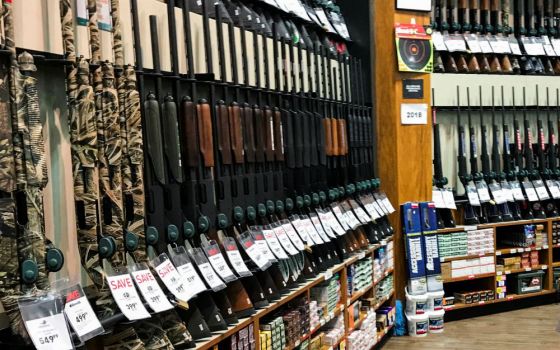Of the two dozen executive orders that President Barack Obama issued Jan. 16 as part of his plan to reduce gun violence in this country, the public needs to watch order No. 14 carefully to ensure that it is implemented fully and completely. It could profoundly reduce gun-related deaths and do it in a way that won't raise the specter of Second Amendment rights or frighten hunters and people who shoot for sport.
Item 14 directs the Centers for Disease Control and Prevention and other federal scientific agencies to conduct research into the causes and prevention of gun violence. The executive order includes investigating links between video games, media images and violence, but more importantly this order, by reversing a decade-and-a-half freeze on gun violence research, removes firearms from a specially protected class of consumer products and puts them on par with other dangerous consumer products, like blenders, pharmaceuticals and automobiles.
The White House fact sheet released with the president's plan makes the point that "to research gun violence prevention, we … need better data." Presenting the plan, Obama said, "We don't benefit from ignorance. We don't benefit from not knowing the science of this epidemic of violence."
Since 1996 Congress has forbidden the CDC from using federal money to "advocate or promote gun control." Research funded by the National Institutes of Health has been similarly restricted since 2011. Though the language is broad, the restrictions have had a chilling effect on all research into gun violence.
Legal experts believe Obama's executive order has the power to allow funding into gun violence research to go forward, though it could face a court challenge. Of greater risk is that the federal scientific agencies may have the authorization to do the research, but Congress may not appropriate the money to fund it.
The president has called on Congress to provide $10 million for the CDC to conduct further research into gun violence, and for $20 million to expand the National Violent Death Reporting System, which collects anonymous data on firearms used in homicides and suicides, from the current 18 participating states to all 50 states. The data includes the type of firearm used, whether the firearm was stored loaded or locked, and details on youth gun access. Such data, the White House plan says, will help "Americans better understand how and when firearms are used in a violent death" and will inform "future research and prevention strategies."
This is why the public must be vigilant toward the implementation of this executive order.
Those who would doubt that such basic research can help reduce gun violence need to examine the history of the National Highway Traffic Safety Administration, which has the sole mission of researching and preventing deaths and injuries on our nation's roads and highways.
Over its history, the agency has steadily reduced the number of traffic fatalities so that fewer people die in traffic accidents today than did in 1950, even though the number of vehicles on the road and the number of miles driven have increased. The agency achieved these results with a budget of $62.4 million in fiscal year 2012, and it didn't advocate taking anyone's car away.
Public health professionals call gun violence an epidemic in this country. Understanding the "why" of this epidemic is the first step to solving it. We won't have the why without the research.
Other stories in this series:
Researching gun epidemic is first step to solving it, an NCR Editorial
Obama proposals on gun control align with religious leaders' pleas, by Jerry Filteau
Boston researcher: Public health strategies could help reduce gun violence, by Claire Schaeffer-Duffy



